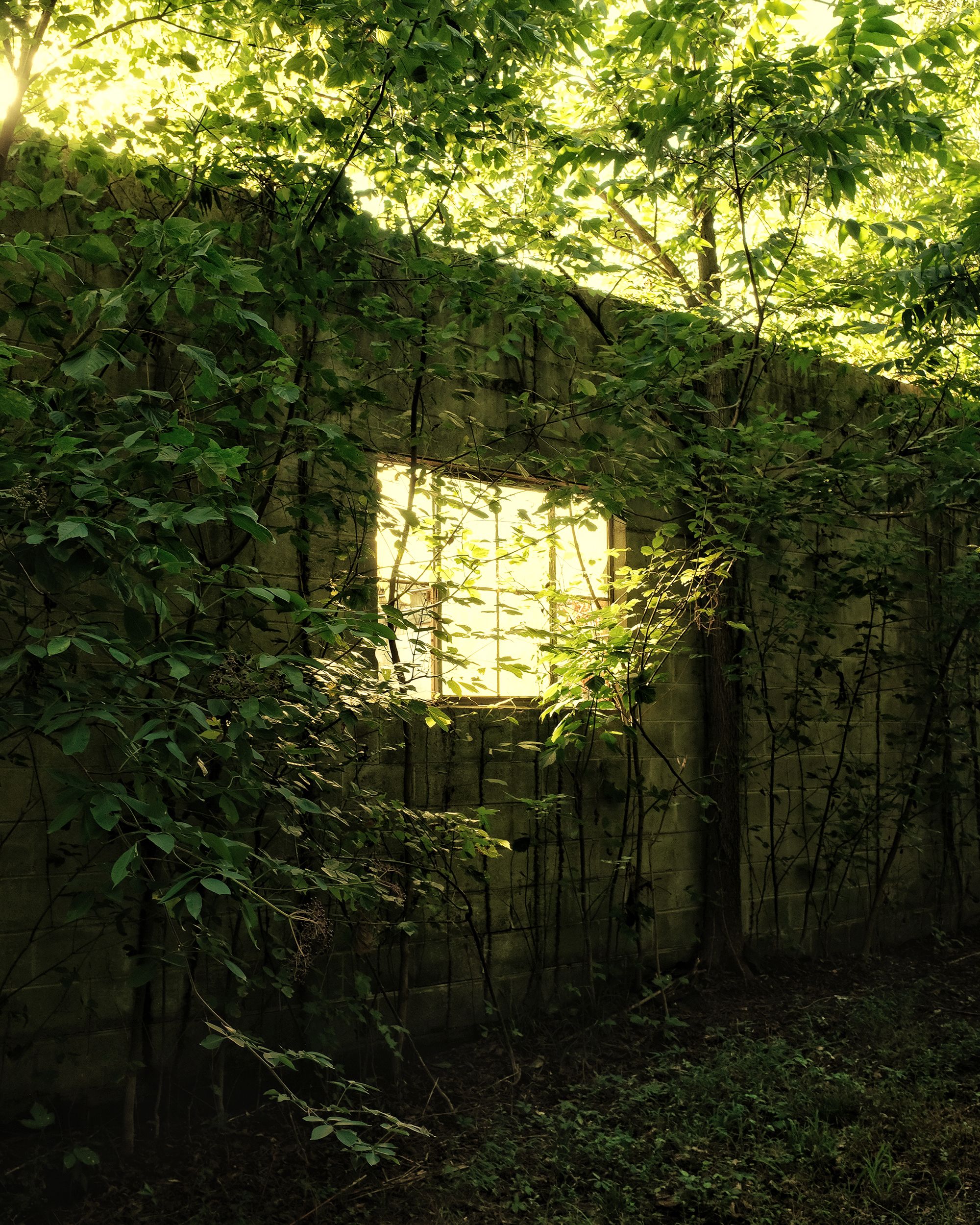
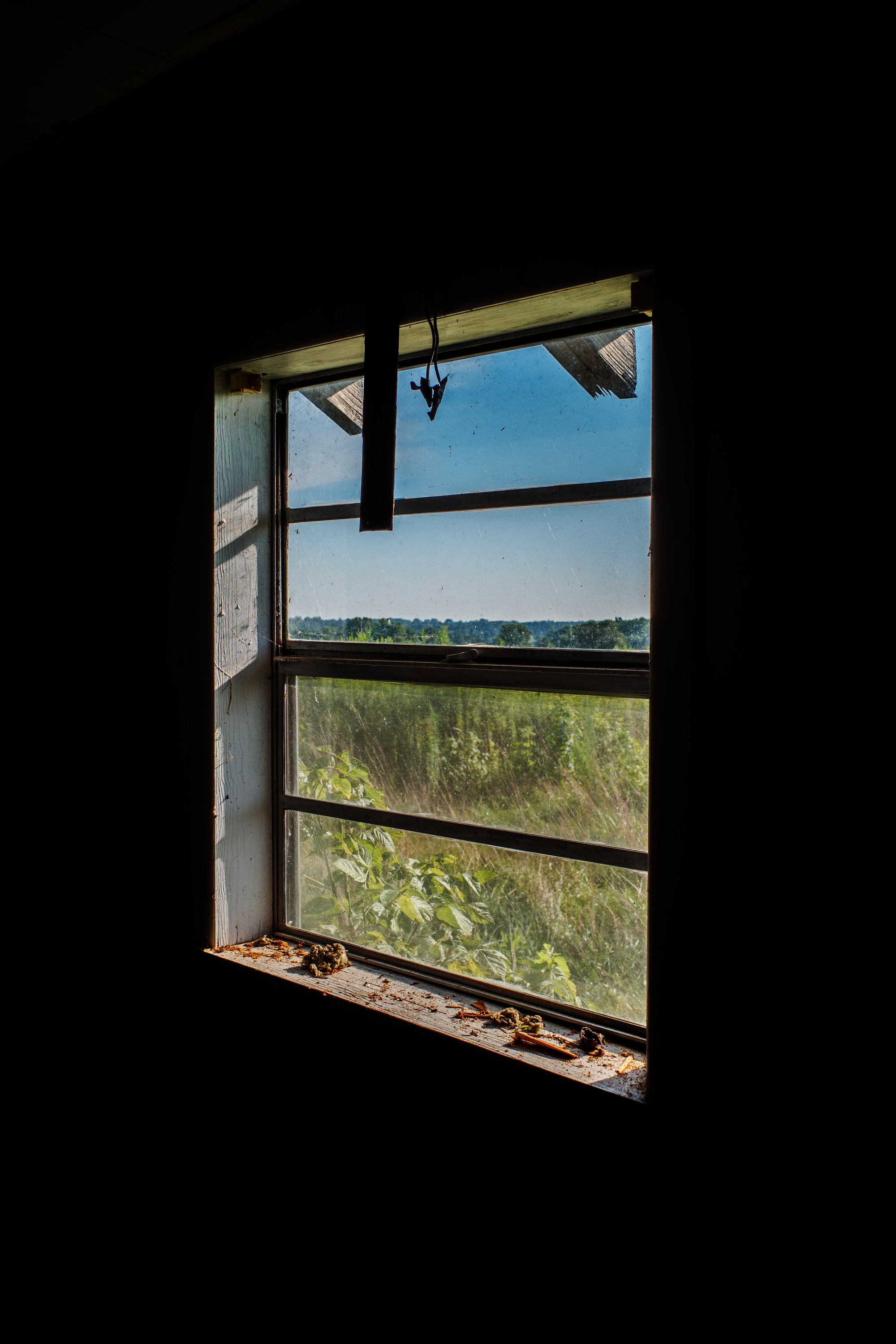
Devin Lunsford and I became friends at some point back in high school, bonded by the loneliness shared by all the sensitive, weird kids growing up in the suburbs of Birmingham, Alabama. Devin began studying photography intensely in his early 20s and over the past fifteen years has developed an instantly recognizable style, drawing on the regional work of photographers like William Christenberry and Walker Evans in his rapturously beautiful, frequently eerie images of mundanity and decay captured during his long drives around Alabama.
While I didn’t stay in Alabama, it has always remained close to my creative work; one long drive with Devin through Hale County sparked a lot of ideas for my first book, All By Our Lonesome–its cover graced by one of Devin’s photos. I’ve dipped in and out of photography since high school, but following a recent period of intense focus on graphic design and visual artmaking I wanted to exercise those muscles. Devin helped me pick a camera and get to shooting again. During the hottest week of the summer I went home for a visit and we took another drive, this one along the back roads to Sand Mountain, a stretch of bleached asphalt and farmland between Birmingham and the Georgia line. We took pictures and shot the shit, talking photography, music, pro wrestling, the bad old days and the good new ones. I didn’t record any of it. We caught up by email later:
Wadley
As we drove up the old state roads toward Georgia I’d find myself zoning out and then you’d stop quick and pull over to take pictures of an old storefront, or an abandoned house, or an old car nearly lost in tall grass. These things are everywhere, but they’re easy to ignore, camouflaged into the landscape. What do you look for? How do you find your subjects?
Lunsford
Some of it is instinctual from years of thinking and seeing photographically, and a lot of it is an intense emotional response to light and form. The right light can democratize any scene and make everything worthy of a photograph. It helps that I enjoy the act of exploring and making photographs and the place where I make work is rich in interesting locations and scenes that look like they came straight out of a southern gothic novel. The most interesting place to make work is where grotesque or dull subjects intersect with the beautiful. It’s a dichotomy I feel describes the Deep South as a whole–it’s what makes this place so complicated and interesting.



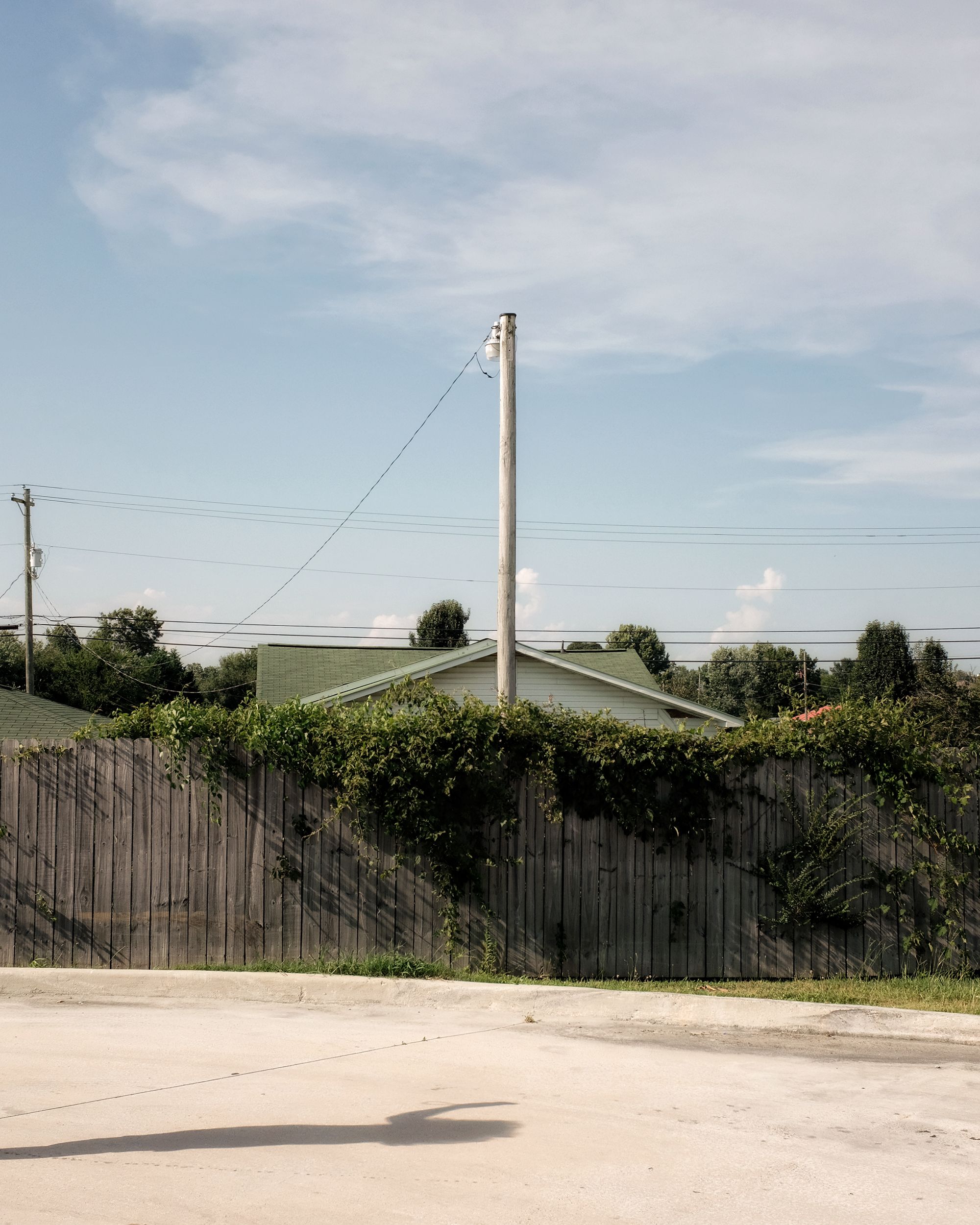
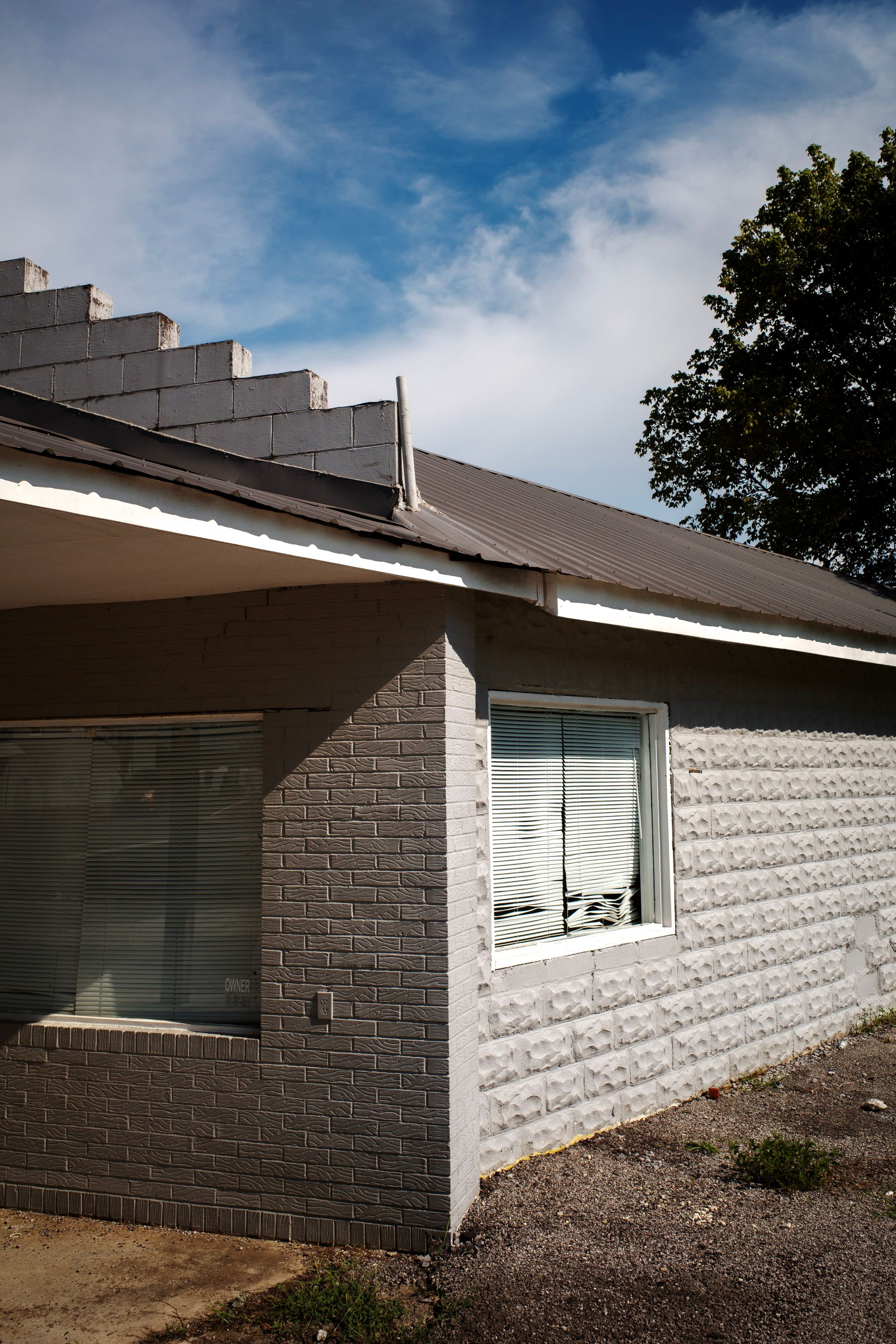
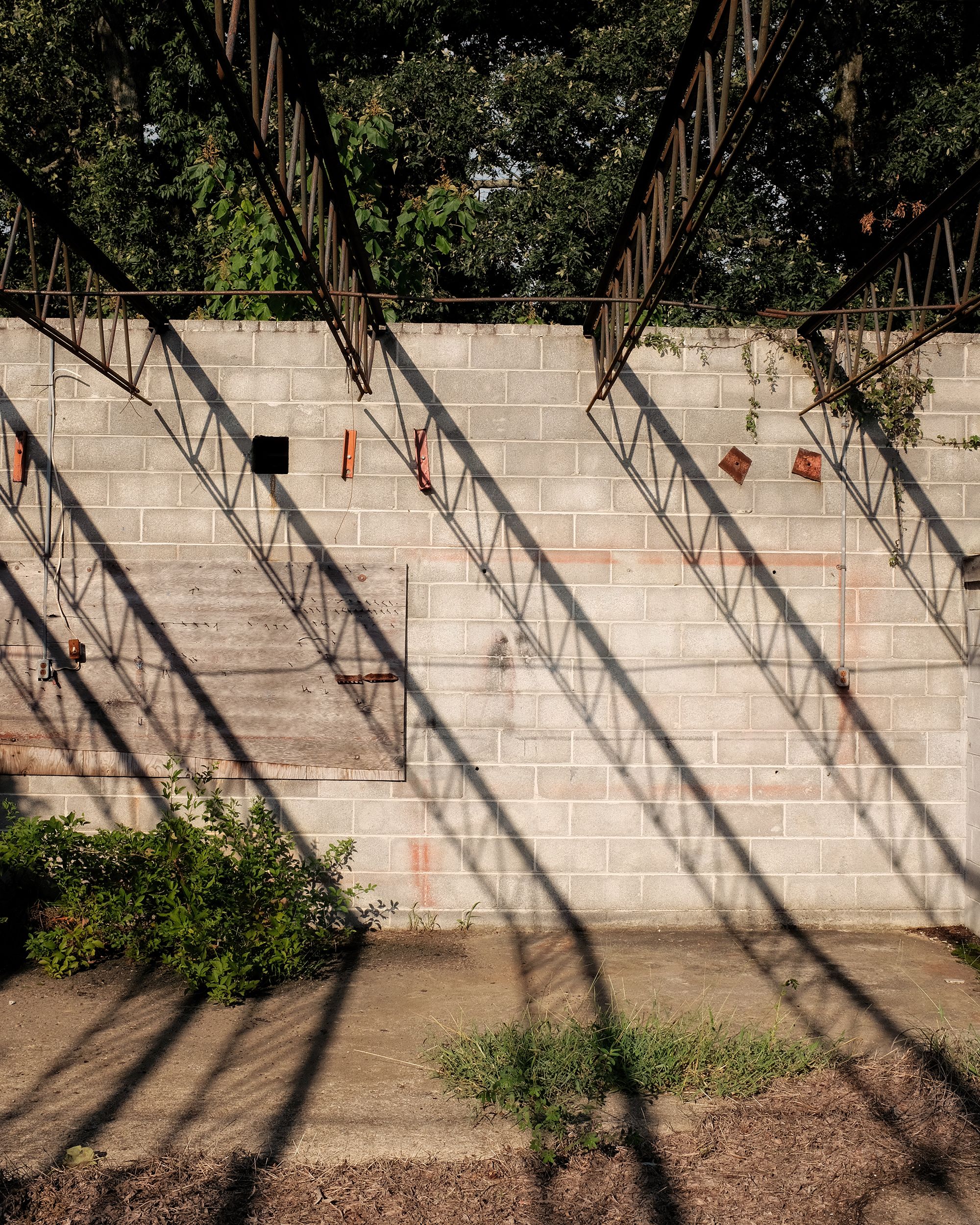
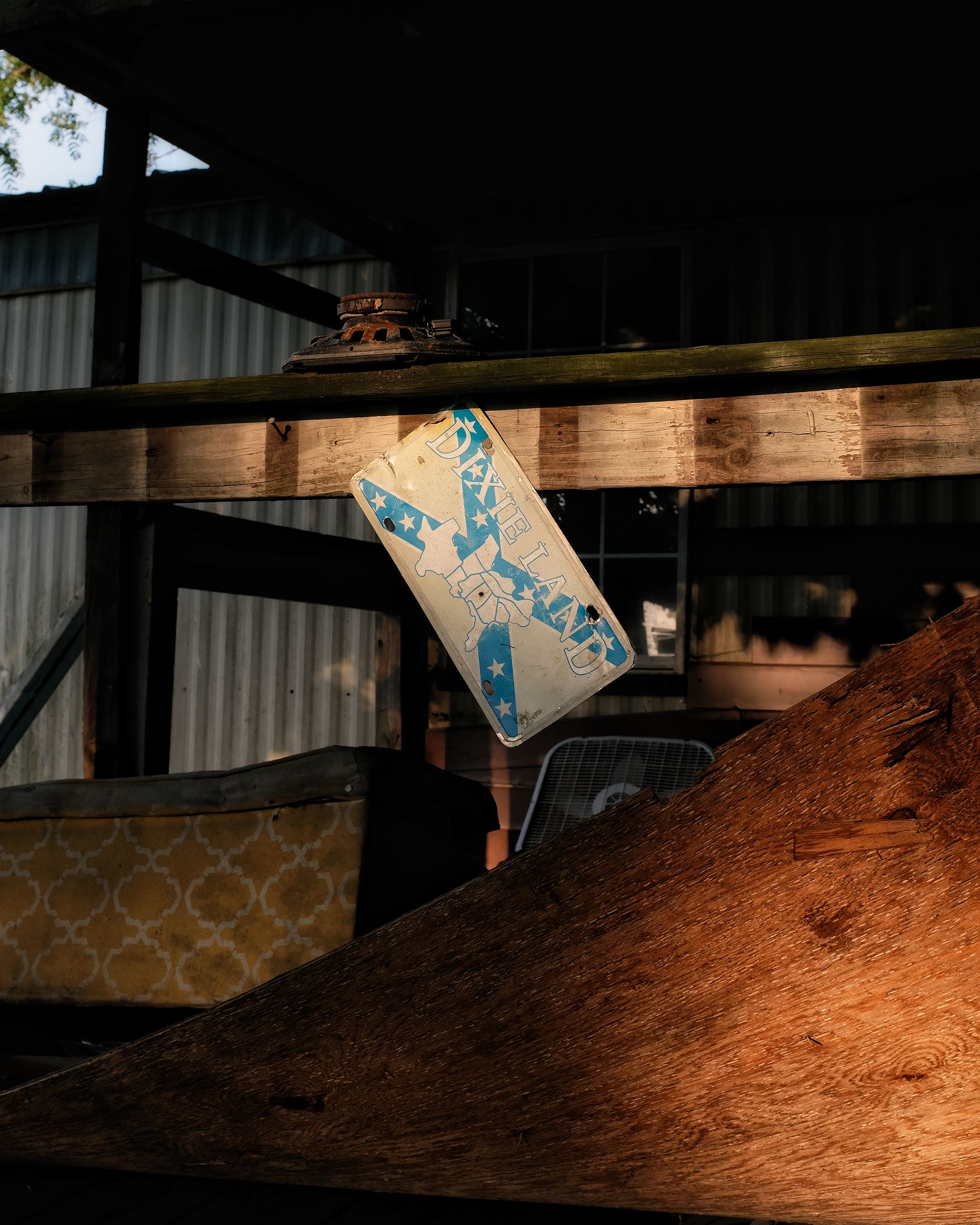
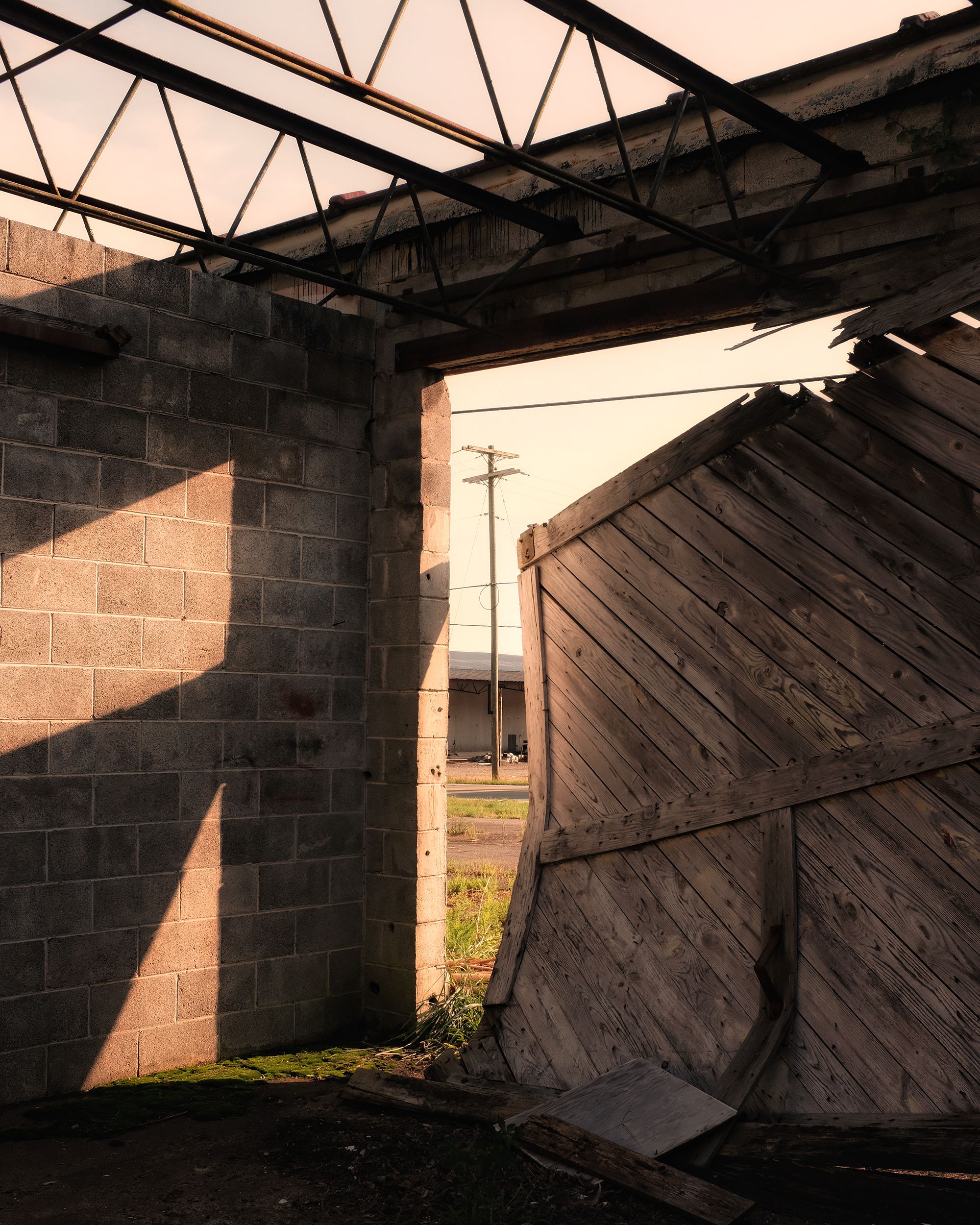
Wadley
In taking this drive together we obviously ended up shooting a lot of the same subjects, and we didn’t shy away from highlighting that in the final series. Aside from the most basic differences–equipment, perspective, processing, aspect ratio–what do you think distinguishes your work from mine?
Lunsford
The first thing that I noticed was a play with geometric patterns and shapes, particularly triangles. Whether that was driven consciously or subconsciously isn’t for me to know but I see it. The other thing–which I find refreshing after doing this for a while–is the sort of free experimentation I see when one isn’t bogged down from years of academic immersion in photography. I have years of seeing, making, and studying photography that are all playing in the back of my mind while I’m out shooting. While this has positives–it’s how I discovered my own method of creating and it has introduced me to many artists who I now greatly admire–there are also negatives associated with it, one of which is being less inclined to fuck around, less inclined to play. I have to make a conscious effort to not continually repeat myself artistically, which is unfortunately easier said than done.

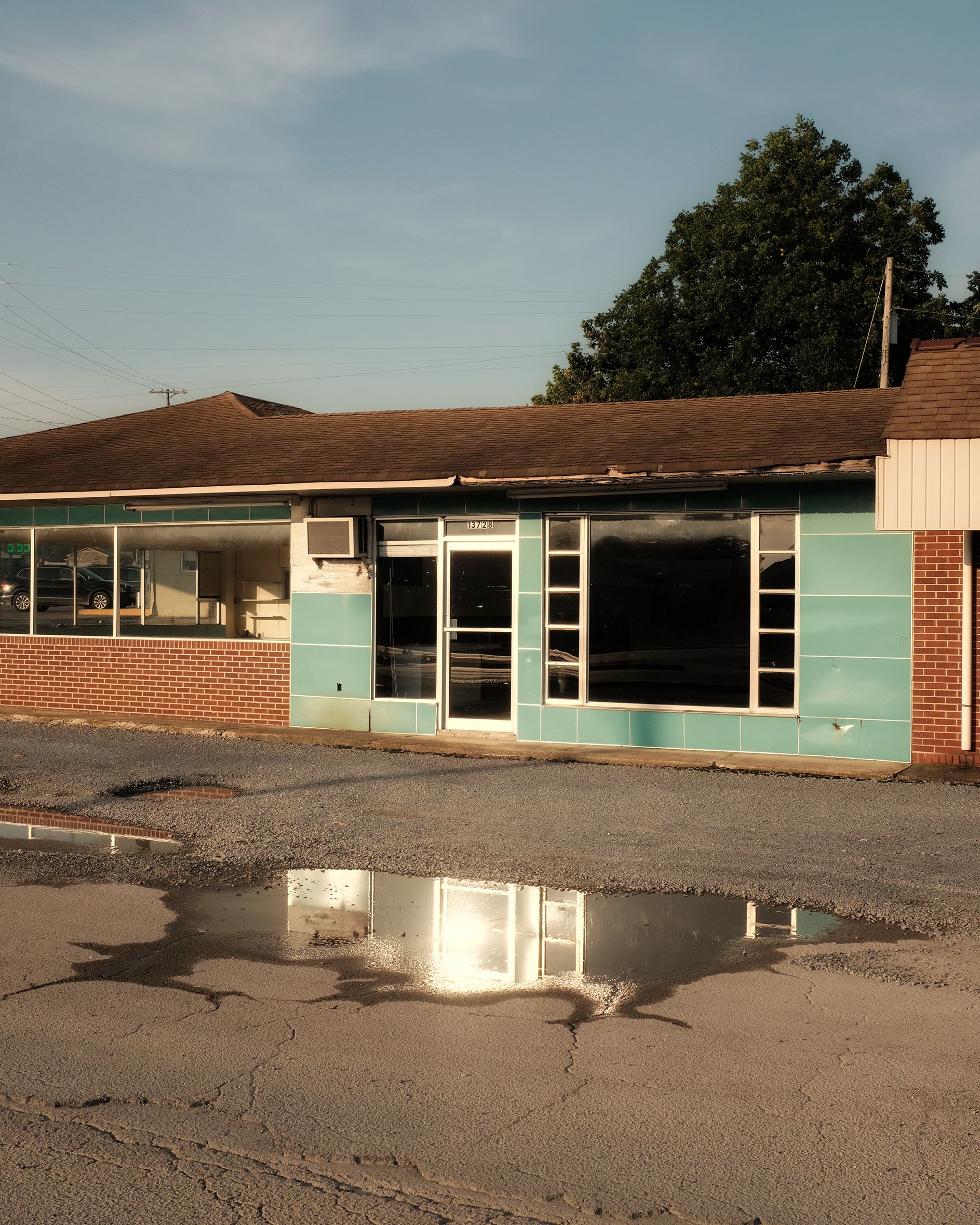
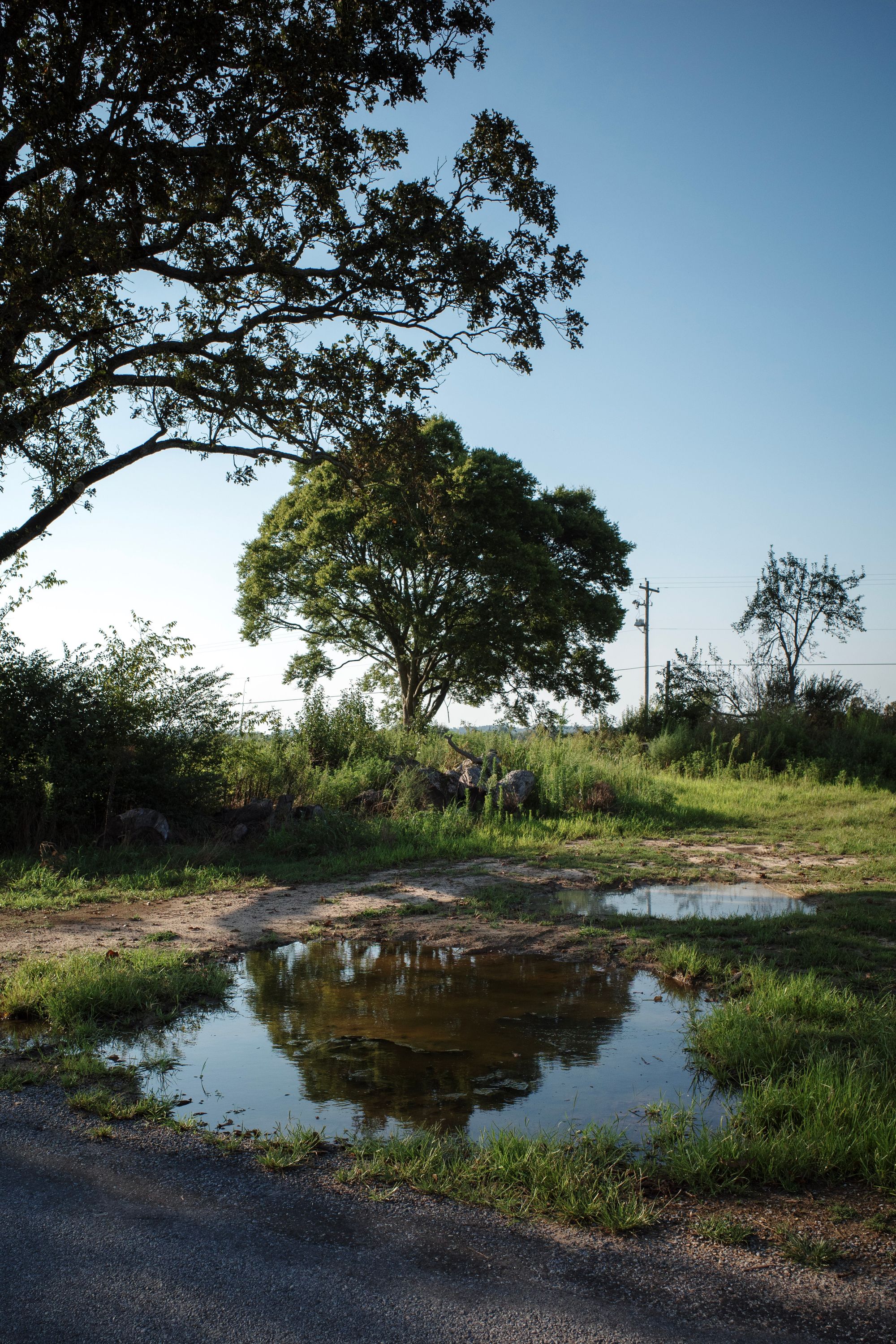

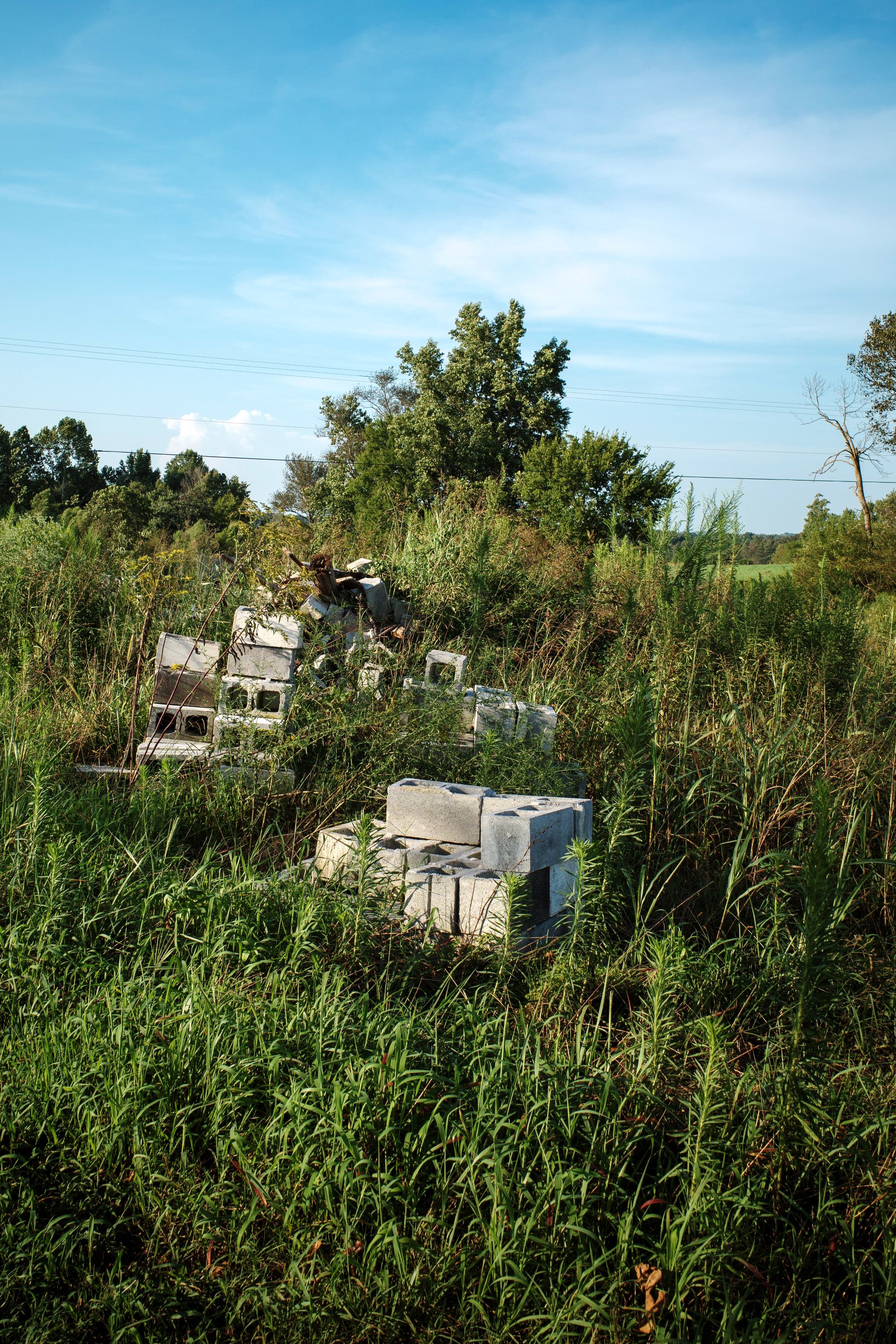
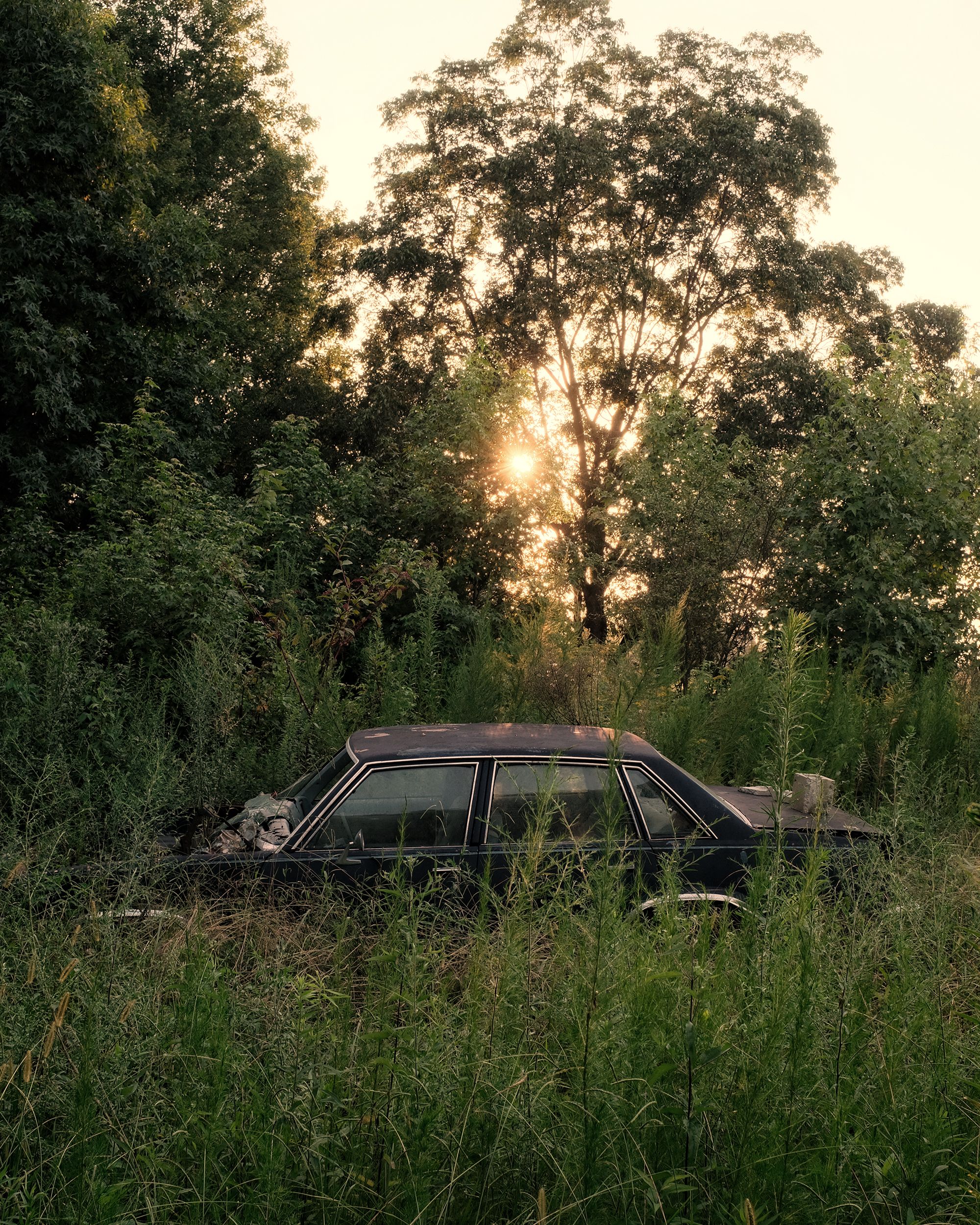
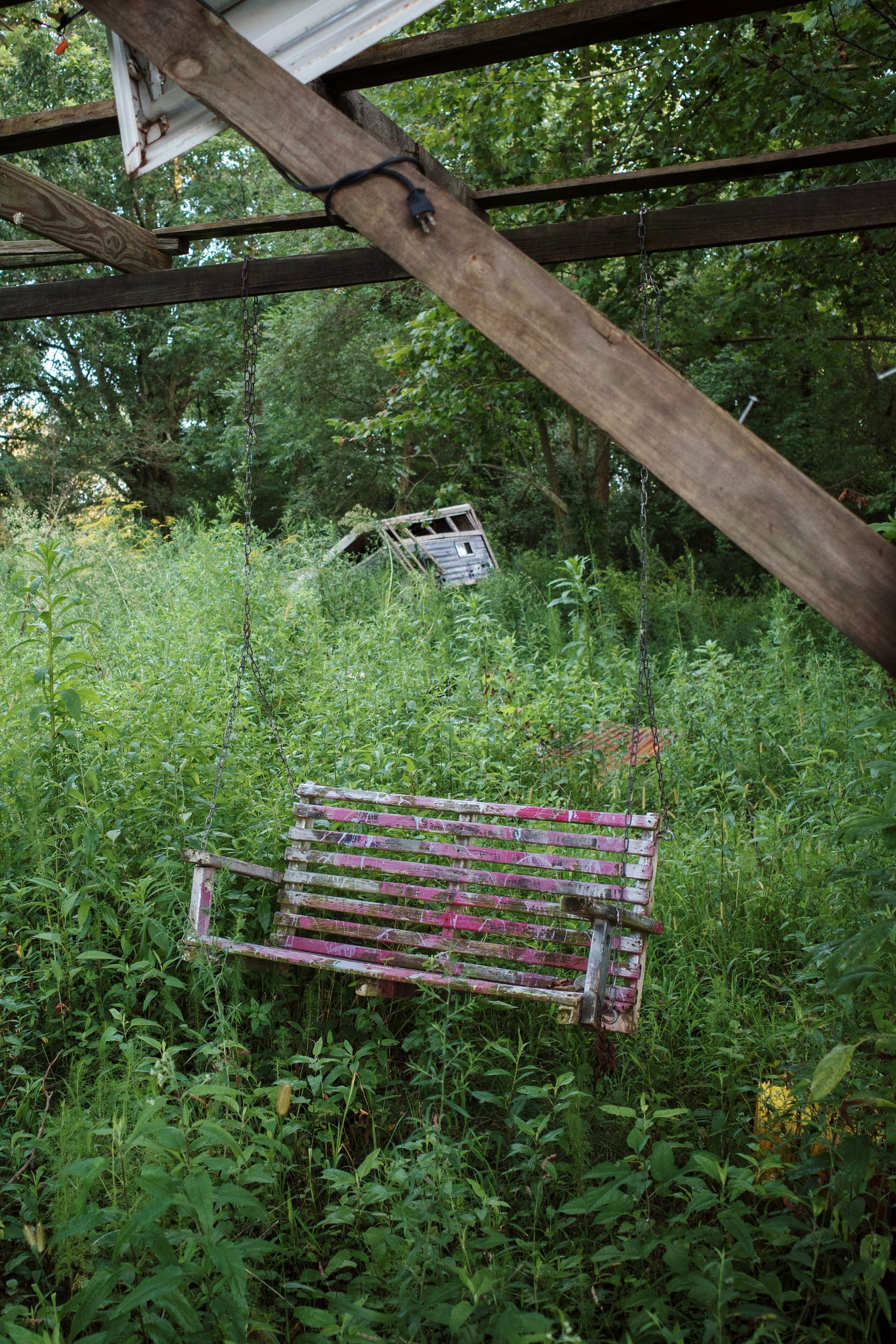
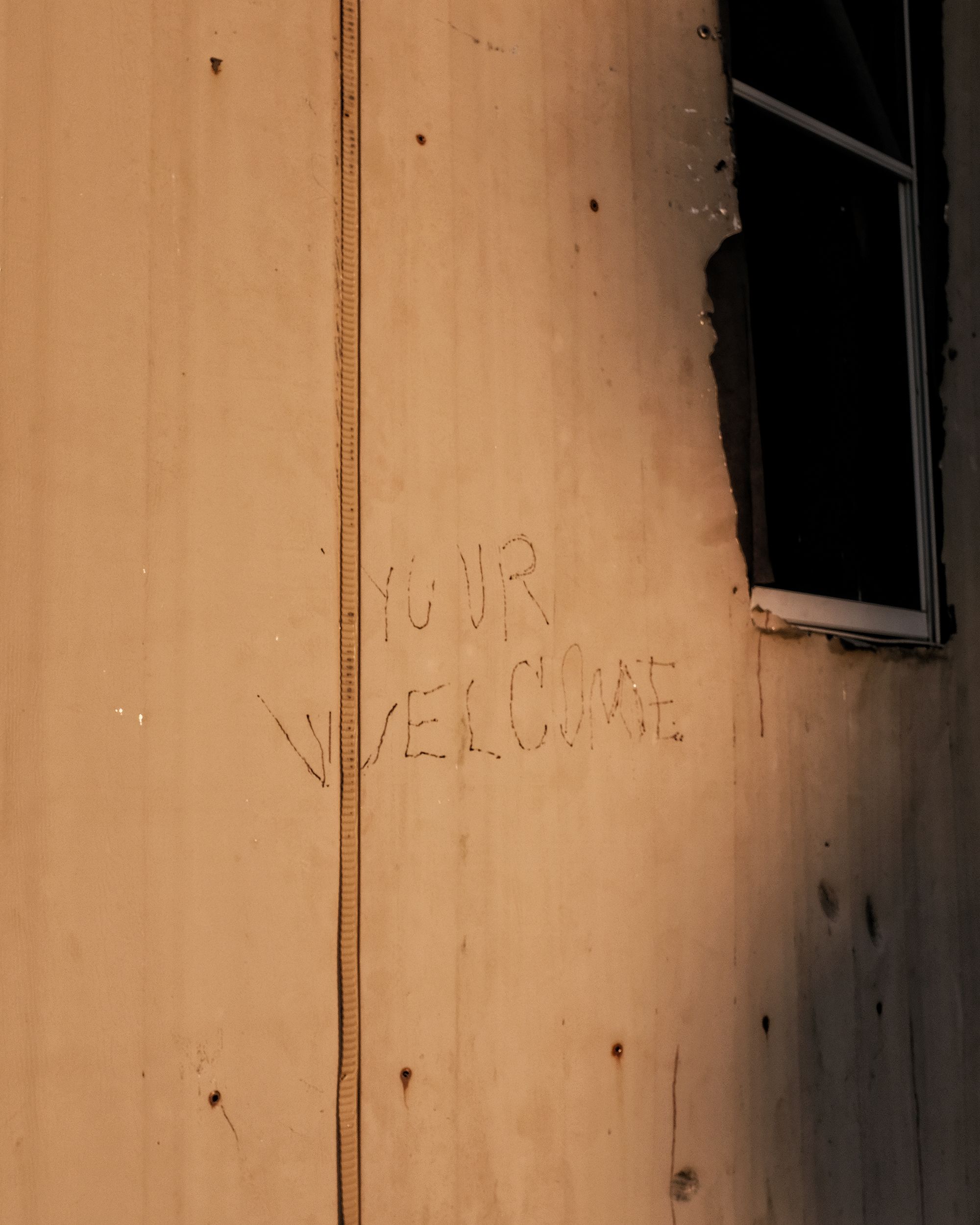
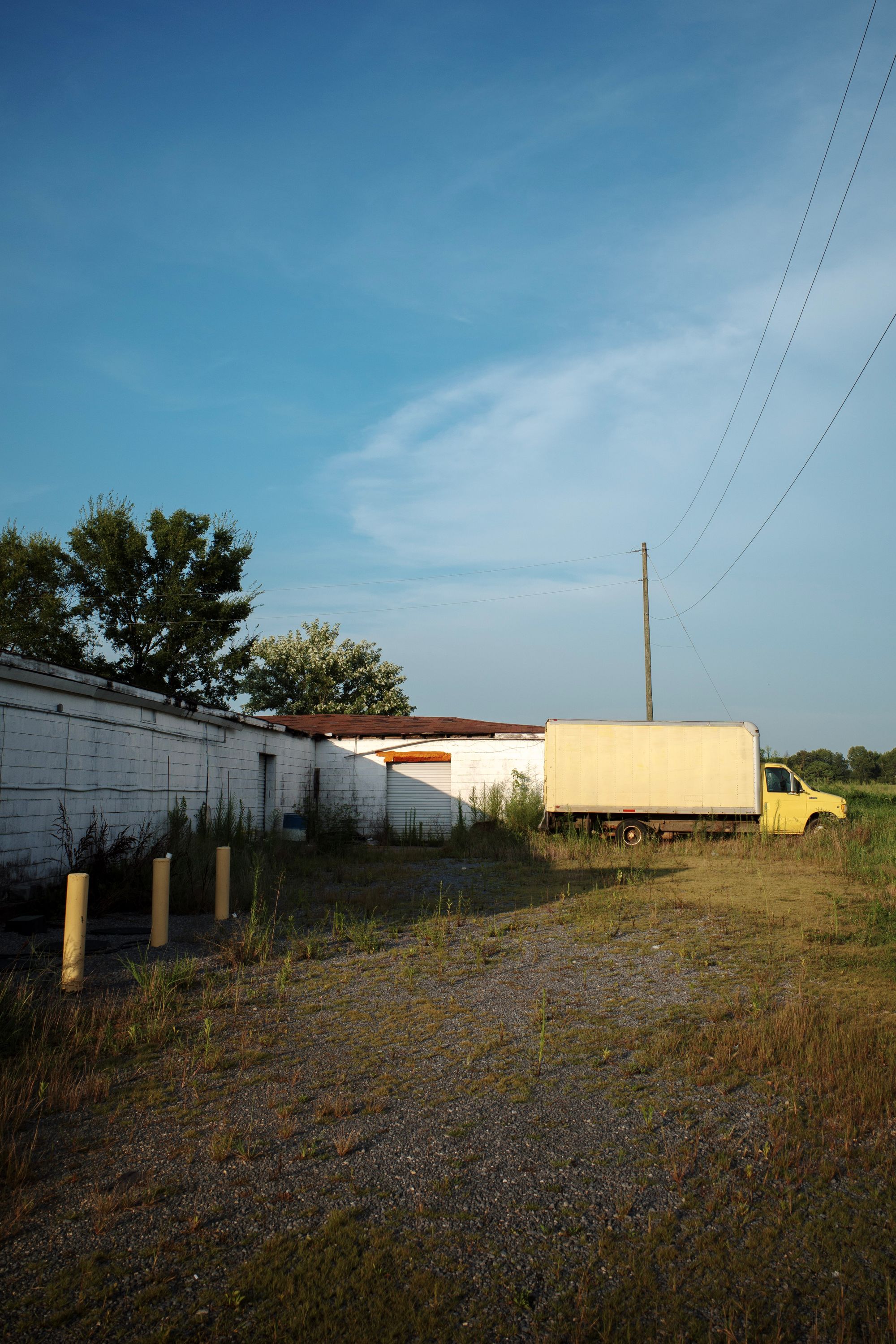
Wadley
Southern gothic fiction and the grotesque figure heavily in your work. Of your three major photo series, two are named after Flannery O’Connor passages–All the Place You’ve Got and Where You Are is No Good (the third, When We Break, How We Shine, comes from a recent Godspeed You! Black Emperor track). How did you decide on these titles? This series doesn’t have a title yet–what do you think we should call it?
Lunsford I’ll be the first to tell anyone that I am not ashamed of having influences and I like to take note of any quotes, passages, songs, lyrics, etc. that resonate with me. It’s probably from years of posting ambiguous and cryptic lyrics on Livejournal, just something I have always done. My titles are both thematic to a body of work but also what I was actively engaging with at the time of making the work. As for this series I’m not sure, but based on our conversations while driving around, probably some offhand remark from Terry Funk or another pro wrestler.
Wadley
Mick Foley tells a great story about Terry Funk’s masterful worked punch, which is a really difficult thing to do convincingly: the first time they got in the ring together, the Funker put Mick (then wrestling as Cactus Jack) in the corner and straight up punched him in the head. The secret to Funk’s fake punches, Foley found out, was they were real. When Mick expressed his surprise after the match, Funk just said “Oh Cactus, all this time you thought I was good.”
At the risk of over-intellectualizing it, pro wrestling strikes me as a perfect embodiment of the grotesque–a fake sport that produces real injuries, artifice and reality all muddled together. Terry Funk’s punch is fake in the sense that it’s theater, an amplified representation, and real in the sense that it fucking hurts when you get hit with it. Photography rides a similar line, I think–we know the camera lies, that the photographer does not document reality so much as manipulate it, but the photograph still depicts a version of the truth. I think All This Time You Thought I Was Good is a great title for this series. It echoes the O’Connor-inspired titles of your previous series, but there’s a personal parallel; to put ourselves in Funk and Foley’s shoes, this drive was my opportunity to jerk the curtain and work with a more experienced photographer–seeing the process that produces your images and finding out it’s less about technique than intent.
Lunsford
That title is fantastic and I love the parallels between wrestling and photography. They both strike a very fine balance between reality and fiction and I think they find success as artforms when they lean into both worlds. Photography has a history rooted in science, where the intention was more in line with a descriptive document than art. Obviously that has changed quite a bit, but the idea that photography still represents some form of truth persists in the same way that wrestling still shows up in sports magazines. Both wrestling and photography are grotesque as fuck when viewed through a lens of truth. It’s why I can’t use the term “documentary photographer” seriously. All that matters to me are the stories pictures can tell and the feelings they can evoke, both of which–thankfully–have nothing to do with the truth.
I’m not an authority on the subject (or really anything for that matter), but for me intent will trump technique every day of the week. Intent can combine with your technique to create something unique but when technique controls your intention it rarely leaves an impression. Technique should be good enough to get you the results you are happy with and then repeated enough so it is baked in and you don’t even have to think about it anymore. For me, intention is something malleable and fluctuating that can’t just be baked in. To do so leaves no room for the ambiguous and the serendipitous, both of which are so crucial to me in photography. There’s definitely a balance I aim for when going out to shoot.
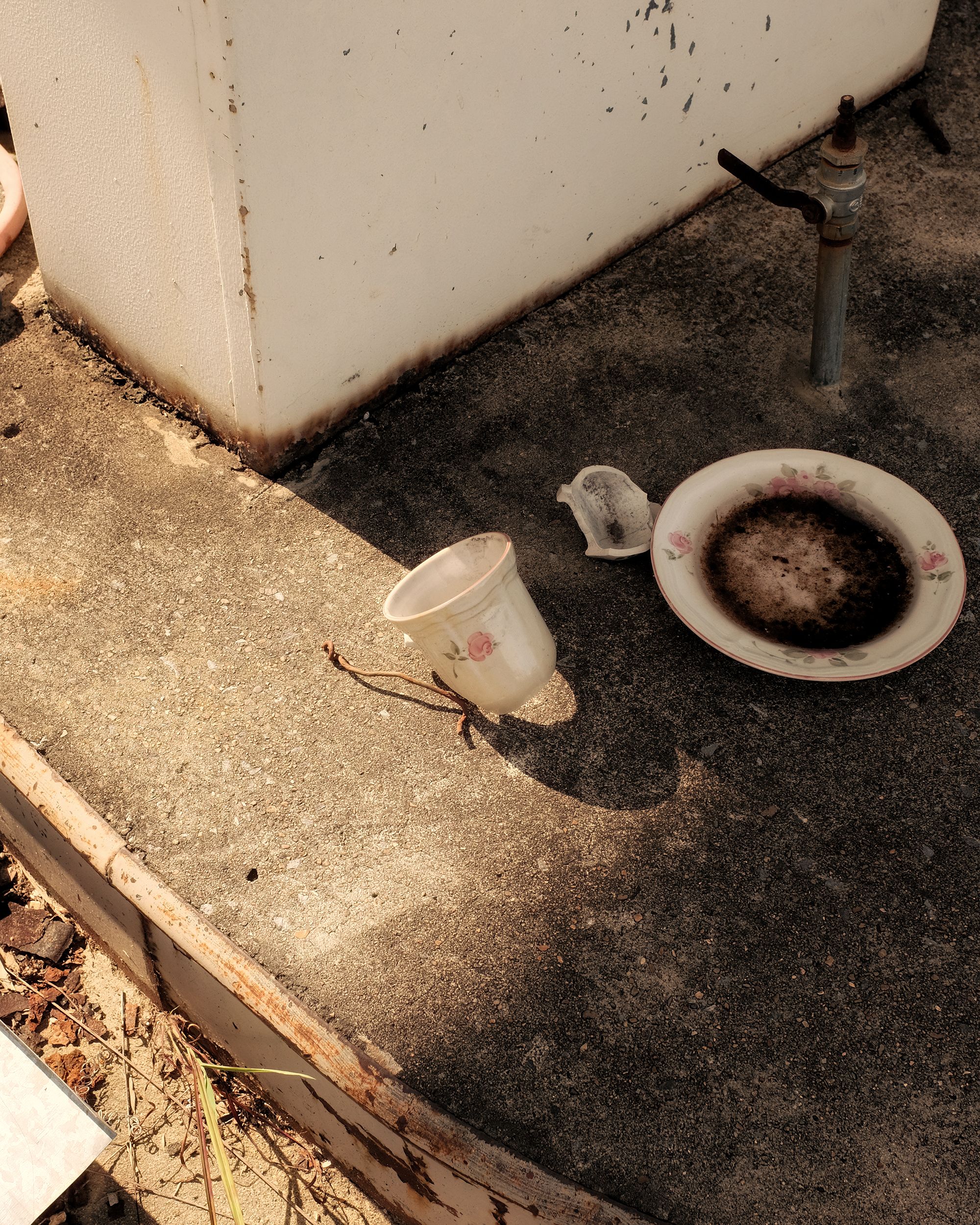
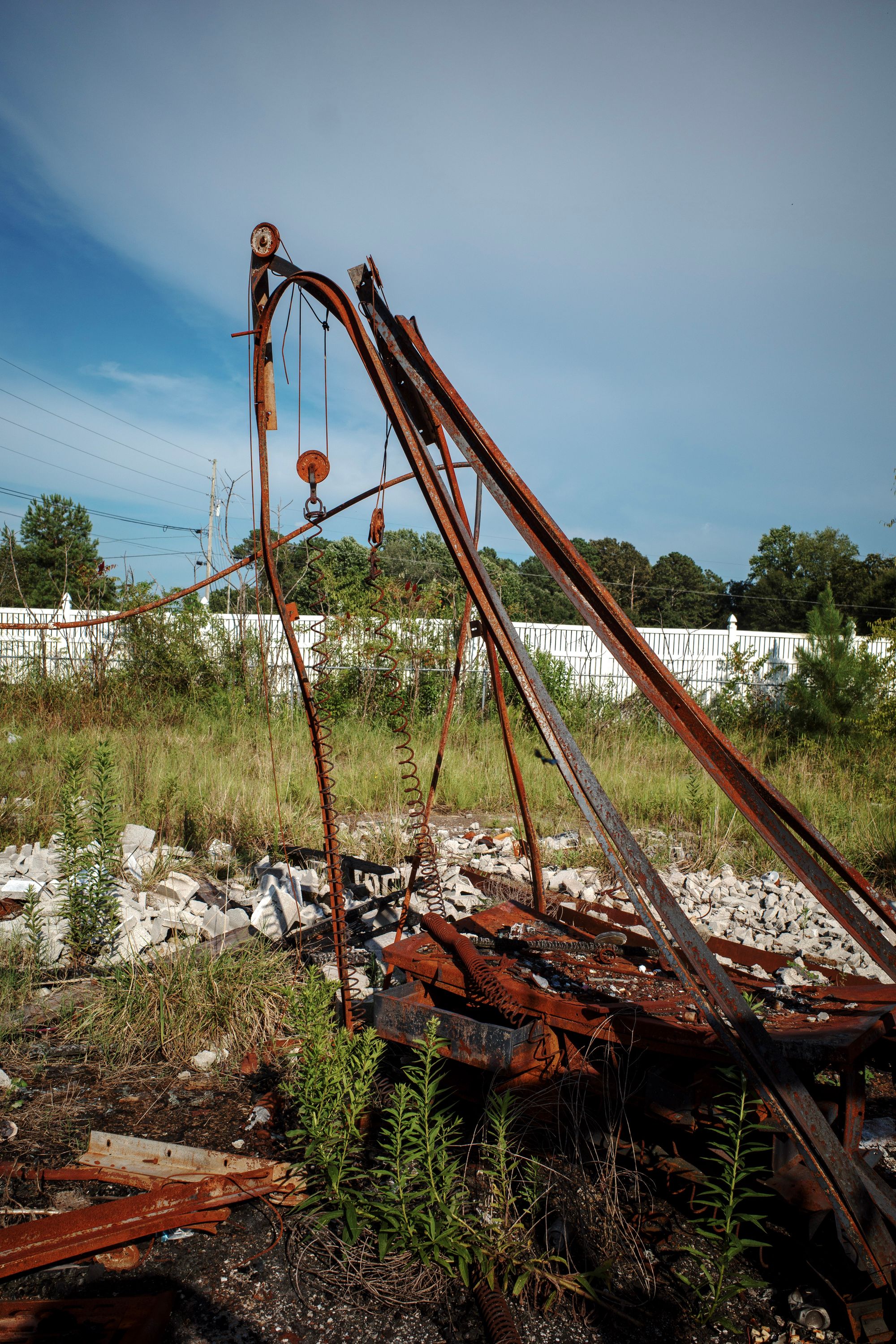
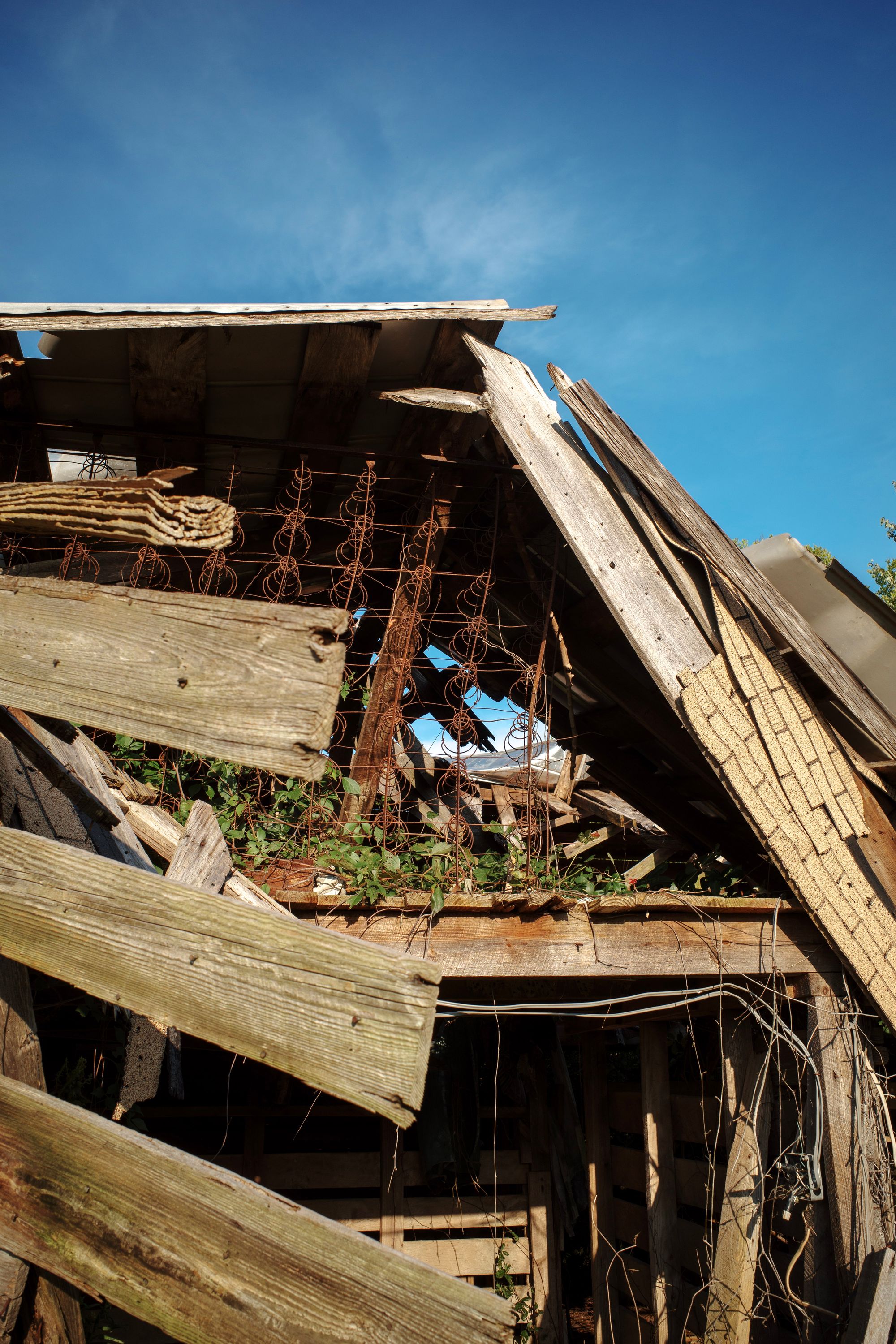

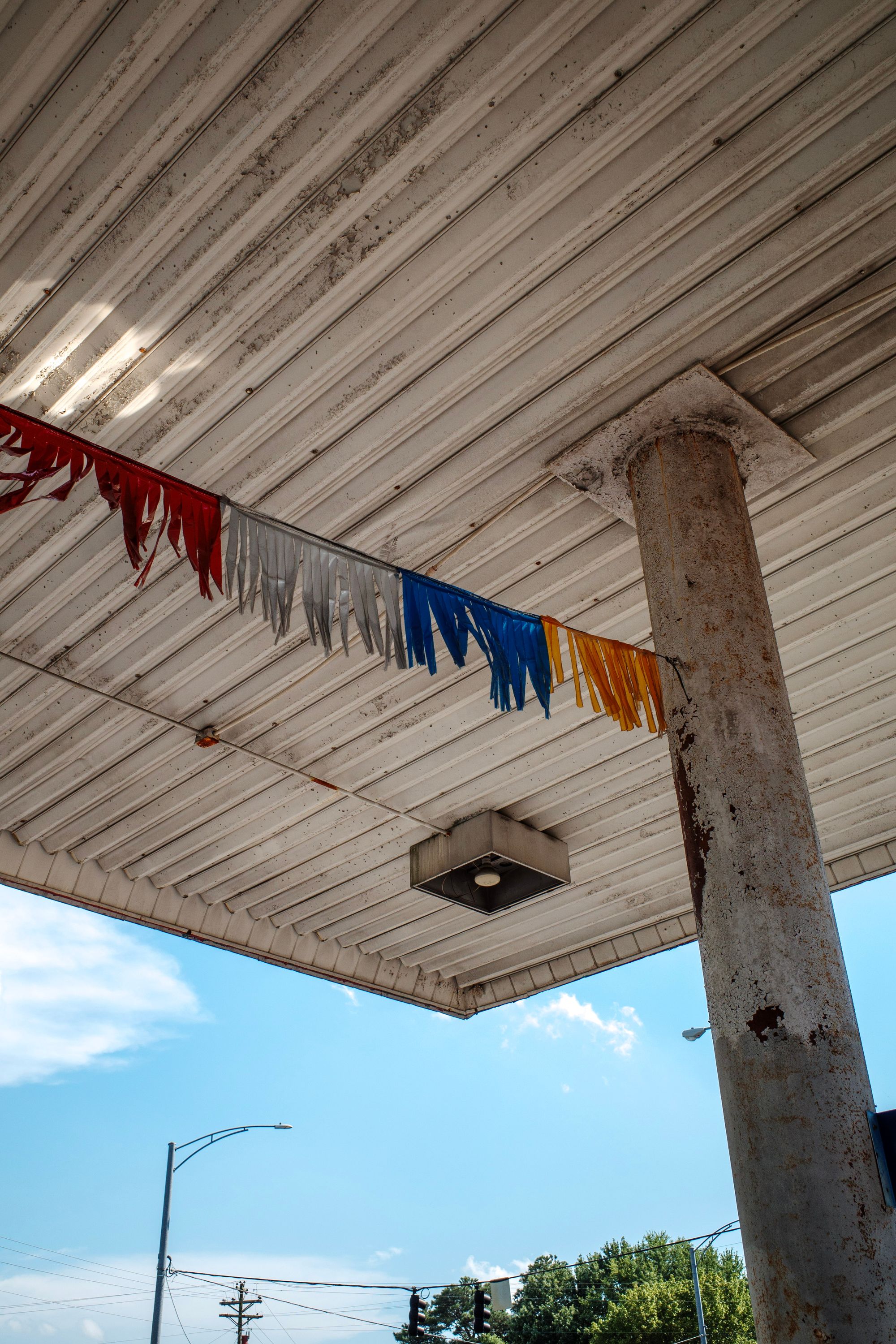

Wadley
I sent you a Mark Fisher essay on the grotesque (specifically about the album by the Fall), which begins with a quote from Patrick Parrinder tracing the origin of the word to sculptural forms found in excavated Roman grottoes–humans, beasts and flora unnaturally entwined. Despite the lack of human figures in this photo series, these images are rife with human traces. It’s got me thinking about the grotesque as a revealing of the unhidden–the realization of perspective. What do you try to reveal in your work?
Lunsford
Really enjoyed that essay. The notion that the grotesque can be weird but the weird can’t be grotesque is one that I have never thought of before but makes a lot of sense. I enjoyed the way he described the album Grotesque as a sort of fragmented half-told tale, “as if they have come to us via an unreliable transmission that keeps cutting out.” That’s how I would describe some of my favorite photo books. Few read like a declarative statement or narrative, but instead it’s all piecemeal—like a poem that jumps around a lot but still manages to come together as one cohesive whole. It’s a weird but beautiful thing.
I try to reveal the connections between blight, beauty, and place. I like to photograph from the perspective of someone who was left behind so my subject matter reflects that. I am not interested in making a document of a specific place from a sociological perspective. I like to keep things open in structure, and I find pictures that ask more questions than they answer to be the most alluring.
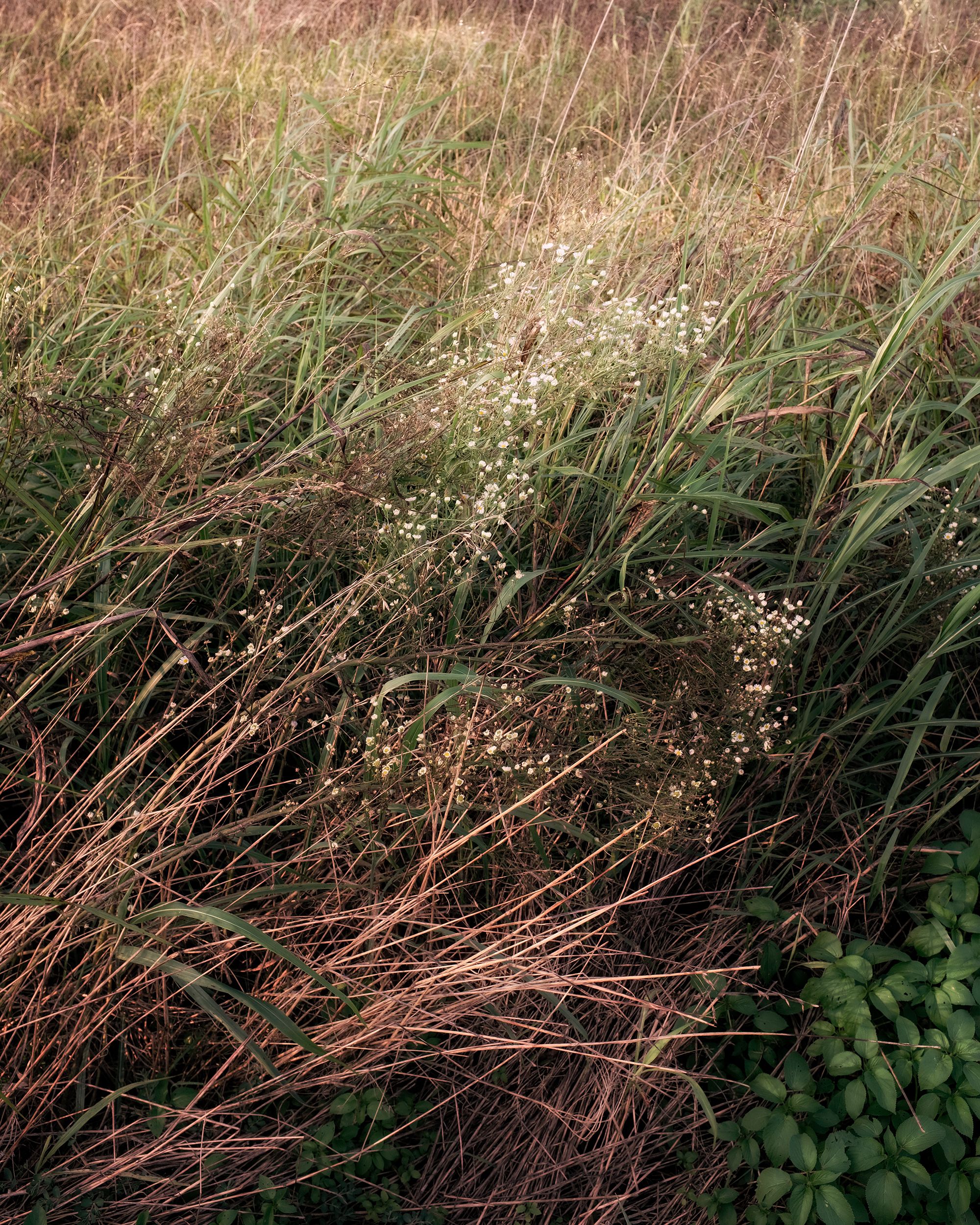
images 1, 4, 6, 8-10, 12, 14, 17-18, 20, 25-26
IG: @devinluns
images 2-3, 5, 7, 11, 13, 15-16, 19, 21-24
IG: @markplasma
Twitter: @markplasma
 "The Tamp Trader" by Felicia Change
"The Tamp Trader" by Felicia Change
 Tape World: Sonic Youth's Daydream Nation [Anything for a Weird Life]
Tape World: Sonic Youth's Daydream Nation [Anything for a Weird Life]